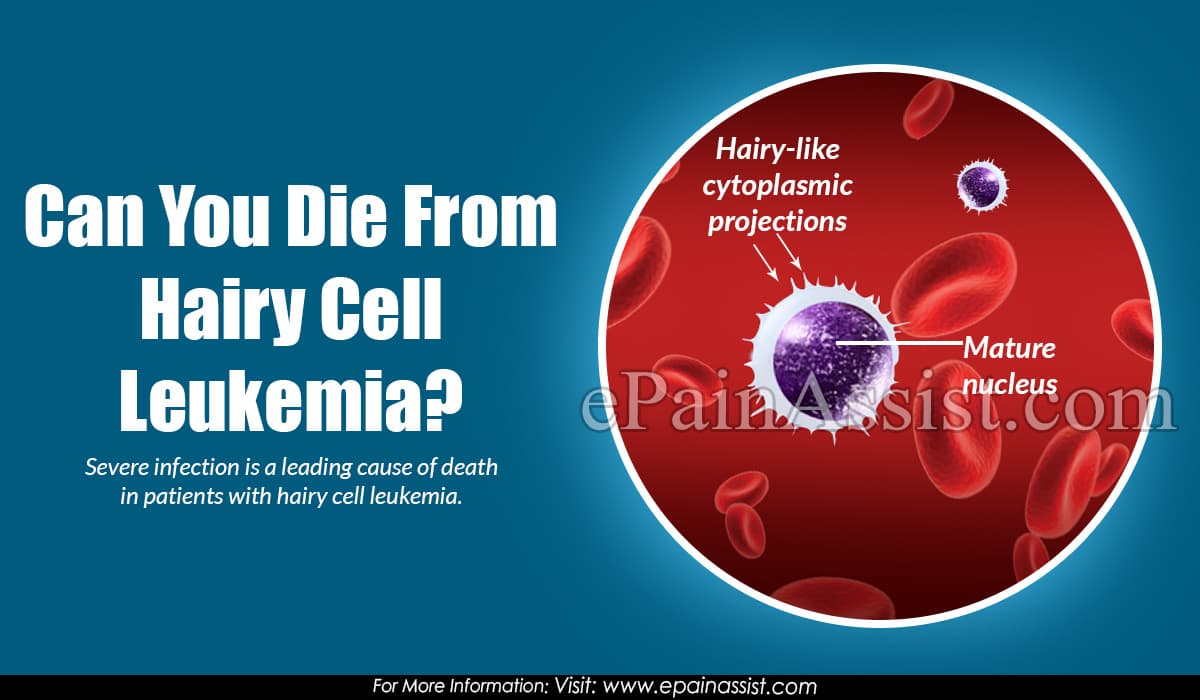Hairy cell leukemia is a chronic form of leukemia that affects B-lymphocytes. Hairy cell leukemia is a slow growing lymphoma and is characteristic of microscopic fine cytoplasmic projections, hence the name. It is a rare disease and found in every 1 out of 500,000 people and it accounts for only 2% of all leukemia. It is most commonly seen in Caucasian and Jewish males in the ratio of 5:1 among males and females with the age averaging between 50 to 55 years. Children are not affected by the disease.
Etiology of Hairy Cell Leukemia
Hairy cell leukemia is marked by proliferation of abnormal white blood cells chronically. This results in pancytopenia including erythrocytopenia, thrombocytopenia, monocytopenia, neutropenia and decreased circulating functional white blood cells. The etiology of hairy cell leukemia is still not clear. However, there have been studies regarding exposure to radiation and chemicals, which have not been proven yet.
Pancytopenia causes severe anemia, infection, bleeding along with chances of secondary malignancies. The disease progression depends from patient to patient. About 10% of the patients do not require any treatment, while 90% of the patients undergo complete remission. Some patients have chronic symptoms for long periods, while few patients die early from complications of the disease.

Can You Die From Hairy Cell Leukemia?
Bone marrow and spleen are the most commonly affected parts of the body in hairy cell leukemia. However, other organs including liver, lymph nodes or other parts of the body may be affected too via blood stream since it is a blood disorder. When bone marrow is affected, the leukemic cells proliferate slowly preventing the production of normal blood cells. This leads to decreased count in normal blood cells causing anemia (low red cell count), thrombocytopenia (low platelet count) and/or leucopenia (low white blood cell count). In some patients, white blood cell count may be raised due to circulating leukemic cells, which are immature and non-functional. All these symptoms lead to increased risk of infection, which can be caused by bacteria, virus or fungus. In addition, chemotherapeutic agents (cladribine and pentostatin) used in the initial treatment of hairy cell leukemia have shown to temporarily increase the risk of infection due to decrease in white blood cells. Severe infection is a leading cause of death in patients with hairy cell leukemia.
Anemia is associated with symptoms of fatigue and weakness, which when severe may require red blood cell transfusion.
Thrombocytopenia is associated with increased tendency to bleed and many patients with thrombocytopenia develop a tendency of easy bruising and/or bleeding from gums and/or nose. Platelet transfusion may be required if thrombocytopenia is severe. However, both transfusions are temporary measures until the treatment is aimed at treating hairy cell leukemia.
Splenomegaly is also a common complication of hairy cell leukemia. Enlarged spleen may present with symptoms of abdominal pain and distension along with early satiety. There is an increased chance of splenic rupture due to trauma. Treatment directed at hairy cell leukemia controls splenomegaly; however, some patients may require splenectomy.
Hairy cell leukemia has also been associated with increased risk of developing secondary cancer. Long term follow up along with regular cancer screening is necessary to detect secondary cancer, if present.
Treatment of Hairy Cell Leukemia
The main aim of treatment is to decrease complications and the risk of infection. It is important to diagnose HCL properly to differentiate it from other leukemias, so that proper treatment is given. Treatment is carried out in symptomatic patients with cladribine and pentostatin being the first line drugs. Complete remission is achieved in about 90 to 95% patients. Patients with diagnosis of infections are treated successfully with alpha-interferon along with either cladribine or pentostatin. About 30% of the patients relapse, but can be re-treated successfully.
Long term follow up is required with repeat bone marrow biopsy for detecting relapse or residual disease. The prognosis of hairy cell leukemia is excellent with a 10-year survival rate in most of the patients.
Also Read:
